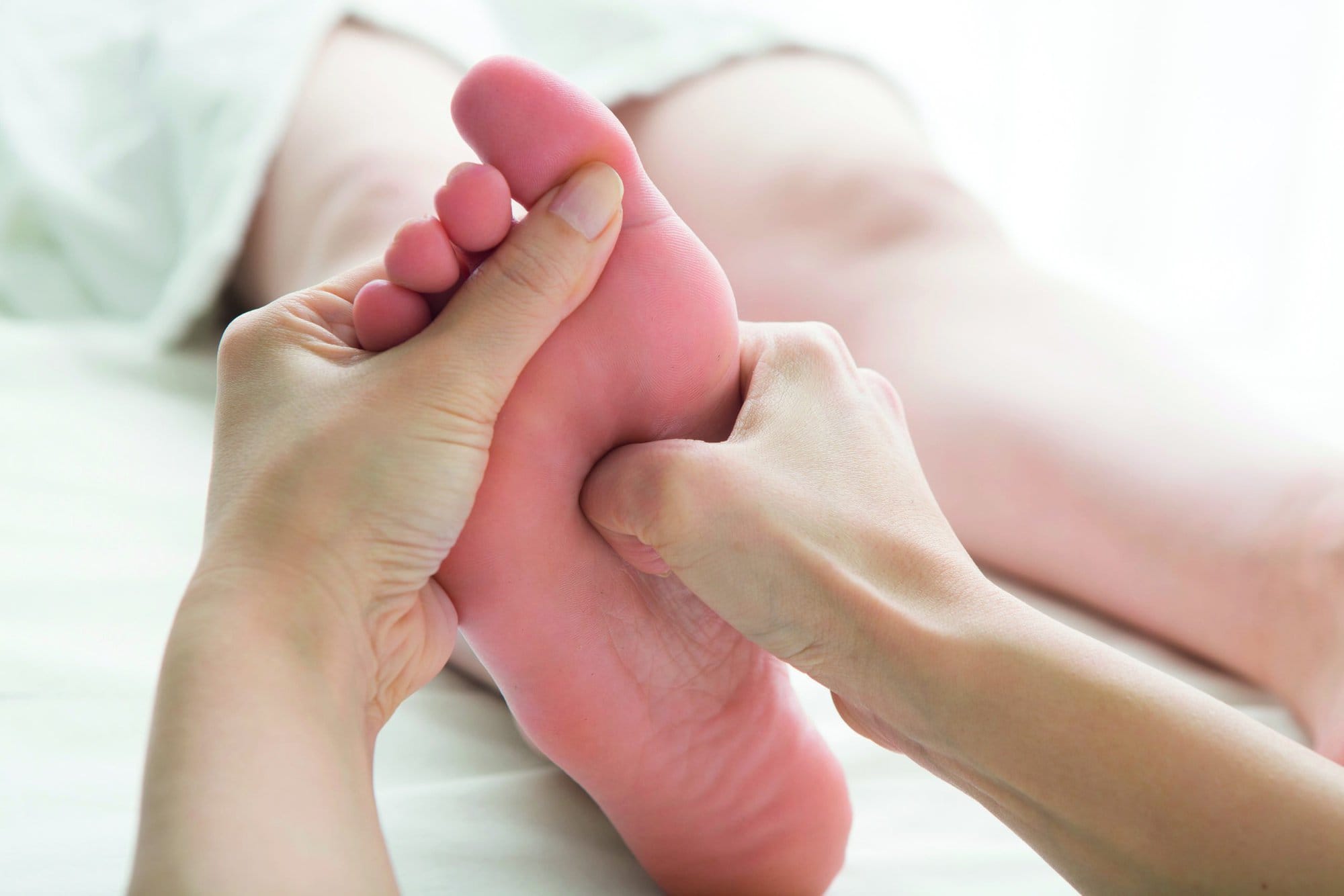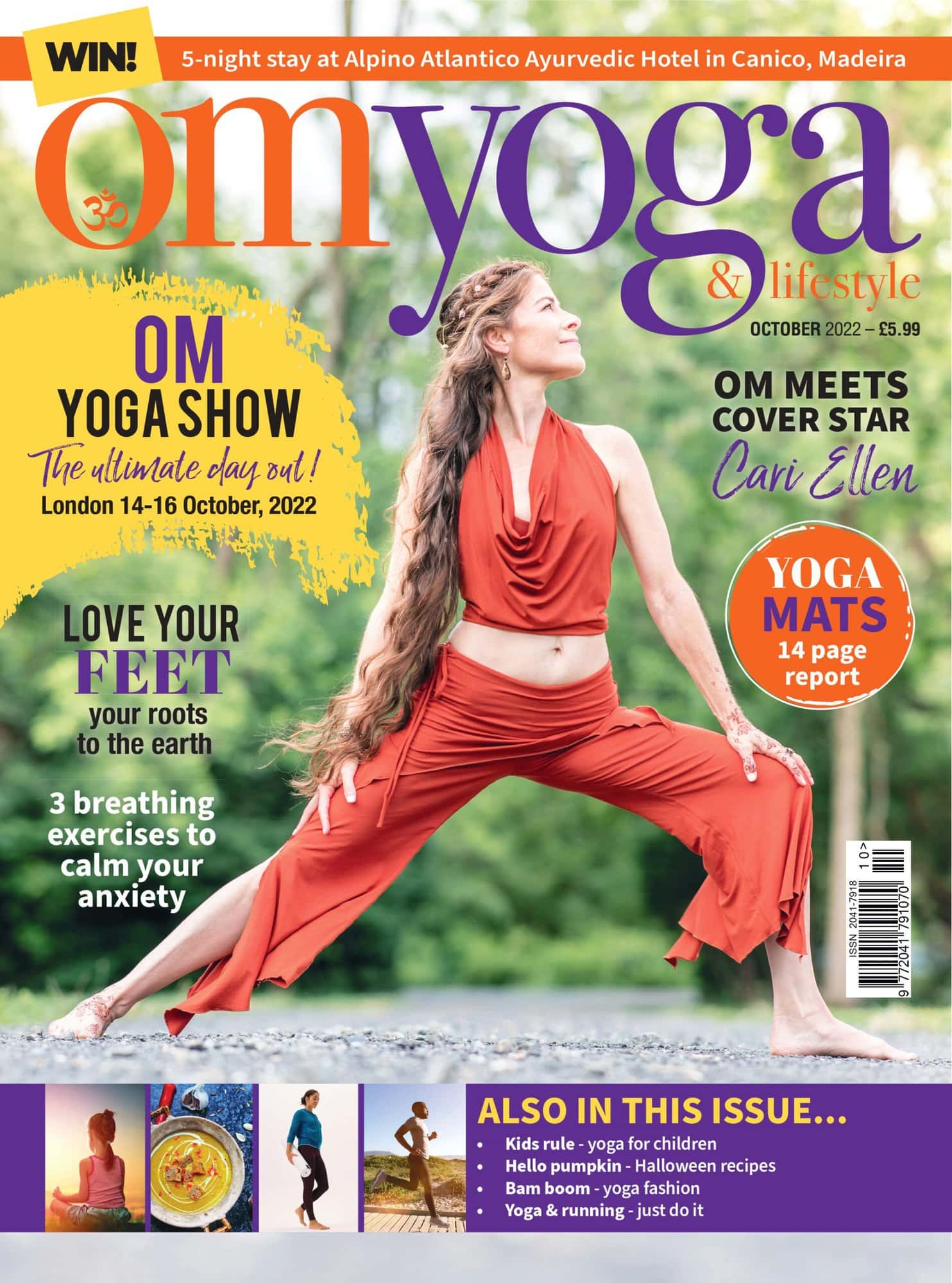
Firm Foundations
BWY yoga teacher Lucy Croucher gives us her top tips for keeping our foundations firm and strong
The English language has all sorts of references to feet; getting your feet wet, finding your feet, standing on your own two feet, having cold feet, being swept off your feet… I could go on!
If you’re a linguist, you can probably find similar references in other languages.
According to the NHS-published podiatry facts:
• there are over 7,000 nerve endings in each foot.
• feet have 250,000 sweat glands and, when active, feet can produce four to six ounces of perspiration a day.
• the average person walks about 115,000 miles in a lifetime – more than four times the circumference of the globe.
The foot is made up of 26 bones which form three arches, the inner longitudinal, the outer longitudinal and the transverse. The talus bone is the keystone of the arches – there are no muscles holding it in place. As well as supinating and pronating, the foot can also rotate around the arches.
As yogis we all know that our feet are our foundation; all our standing practices start from the feet upwards. As well as being the foundation of all standing postures, focusing our attention on our feet helps us balance and feel more grounded. As we age, we start to lose that grounded feeling and become more Vata (or airy). This is why older people lose their balance more easily and this can result in falls, which can be fatal if bones are broken.
Even when we are young, we can suffer from issues with our feet; possibly the most common is plantar fasciitis, an inflammation of one of the plantar fascia. There are two schools of thought on how to avoid this painful inflammation – either a good supportive shoe or exercising and strengthening the muscle layers which make up the sole of the foot. There are strong advocates for both approaches.
The plantar fascia is the thickest fascia in the body; it is attached to the Achilles tendon via the heel at one end and extends over the toes at the other end. Together with four layers of intrinsic muscles it covers and supports the sole of the foot. If you raise your toes, the plantar fascia tightens and this raises the arch of the foot. This arch provides the spiral which helps us walk.
Here are some simple but effective exercises to keep your feet in good shape.

1. Walking barefoot is a great way to exercise your feet. The movement creates supination, pronation and rotation in the foot. When walking, try not to put your foot down too far in front of you as this causes a lot of pressure on the heel.
2. Stand on the balls of your feet, taking the heels as high off the floor as possible. If your primary aim is to exercise your feet and your balance is a little unsteady, then use a support such as a wall or chair to help you with your balance. Using a support allows you to focus more on the feet, making the exercise more effective.

3. In standing, raise one heel as high as possible, then lean your weight into the ball of the foot; hold for up to a minute or until it becomes uncomfortable.
4. Again, in standing, curl the toes of one foot under and press into the top of the toes. Take the exercise gently and don’t put your full weight onto the tops of the toes. This will almost certainly be quite uncomfortable to begin with and may cause cramps, but it is worth doing regularly, especially if you tend to get cramp when you are on all fours.
These exercises can also be done in kneeling, resting the sitting bones on the heels.
• Dome the feet – take the toes towards the heels.
• Walk around on the balls of the feet, the heels, the outside and inside edges of the feet in turn.
• Try lifting a pencil or similar with your toes.

LOVELY THINGS TO DO FOR YOUR FEET
• Use a spiky ball under your foot to massage and activate the sole; cigar-shaped rollers are also available which tend to be more controllable.
• Use a toe spreader; if you paint your toenails regularly you may already have one.
• If you don’t have a toe-spreader to hand you can interlock your fingers with your toes.
• Massage your feet; this could include holding the two sides of the foot and twisting it from side to side.
• Massage the sole of the foot using the knuckles (if you have ticklish feet you might need to press quite hard).
• Hold your toes and move them up and down.
• Walk barefoot on grass or bare earth.
British Wheel of Yoga Regional Officer for Yorkshire and BWY Trustee, Lucy Croucher is based in Harrogate where she’s been teaching yoga for 10 years, including gentle hatha yoga, power yoga and chair yoga.




